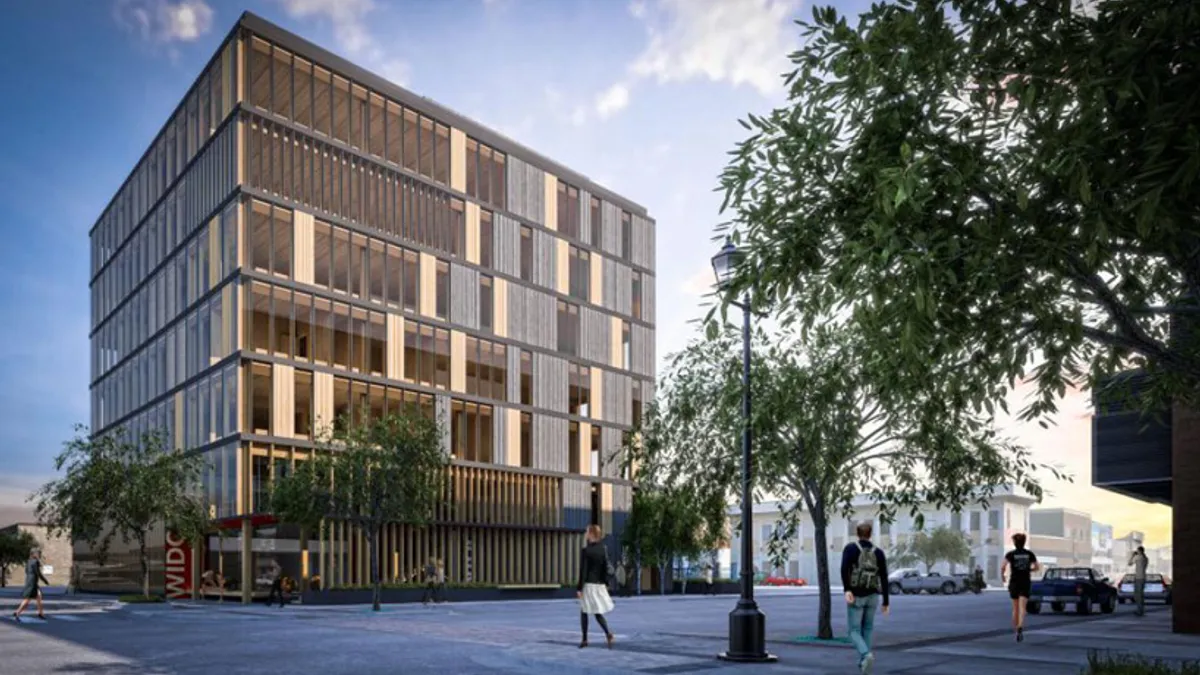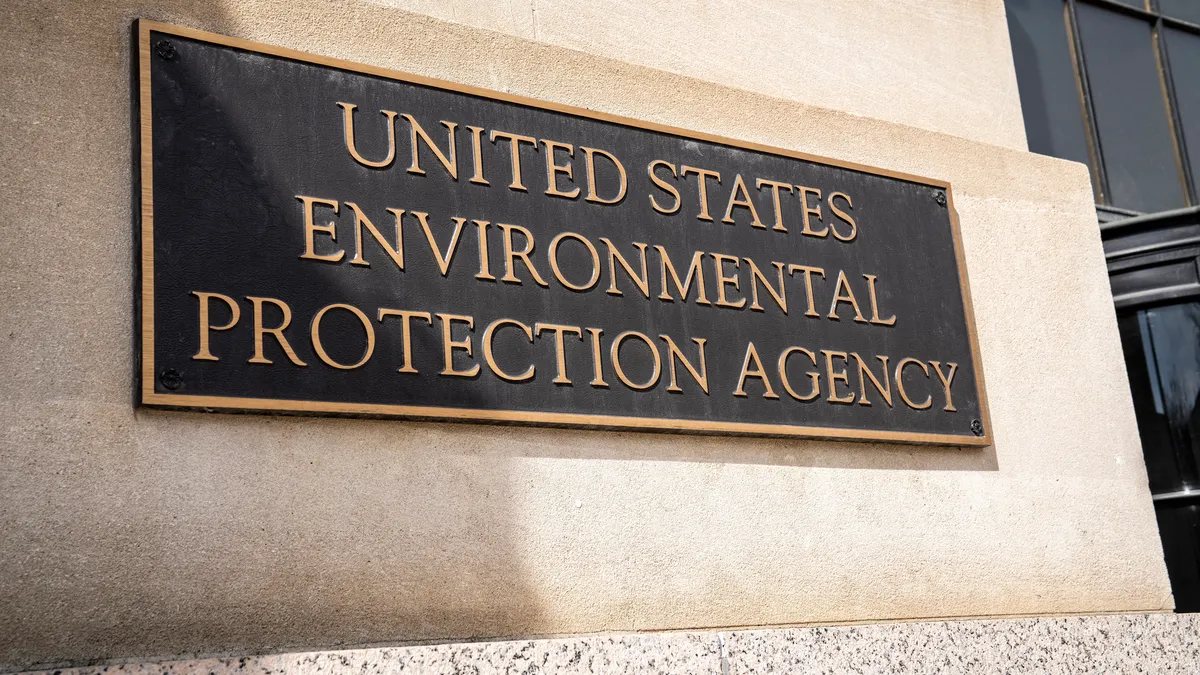A seven-story, 210,000-square-foot office building that broke ground a few weeks ago in Minneapolis has become a curiosity worldwide.
It’s not so much because its developer, Houston- and London-based Hines, made a bold and rare move by building it on spec — as no tenant is in line to occupy the Union Square offices and first-floor retail space when construction finishes in fall 2016. Nor is the chatter over the fact that it is one of just three new, Class A office spaces to be built in the city’s North Loop in years.
What has grabbed headlines all over the world is its architect’s choice of building materials: The office structure — dubbed T3 for its focus on timber, transit and technology — will become the country's first modern commercial property to use engineered wood for its structure and interior.
Poster child
The unassuming edifice, designed to blend in with the aging, wooden warehouses that surround it, has become a sort of poster child for a growing worldwide movement supporting the use of wood for ever-taller buildings. Proponents of so-called “plyscrapers,” like T3’s architect, Vancouver-based Michael Green, are hoping the building that is rising from a vacant parking lot in the city’s artsy North Loop will challenge assumptions about building with wood and prompt more designers, developers and builders to reach skyward with the natural, renewable construction material.
Green, who specified 100,000 cubic feet of wood for the building’s interior, is perhaps the world’s leading and most outspoken advocate of wood buildings. Still, this one will have a concrete foundation to meet the requirements of the local building code, and a steel frame to make connections between the wood.
In-between, the building’s core and floorplates will be made from engineered wood fashioned into oversized panels and glued and nailed together. Structural columns will also be made from engineered wood pressed together to create the load capacity of the old-growth timber that was routinely used in older structures but is no longer available to builders today.
Much of those pieces will be built in a factory before being quickly moved to the site, where builders will put it together.
Worldwide wood
That process is similar to the one European and Canadian builders have used to construct their upward-bound wood buildings.
One of the first was London’s nine-story Stadthaus apartment building, built in 2008, mostly with cross-laminated timber. And with 10 stories, the three-year-old Forte apartment complex in Melbourne, Australia, bills itself as the world’s tallest timber apartment building; it reportedly took only 10 weeks to build.
Green’s own, eight-story Wood Innovation Design Center at the University of Northern British Columbia is North America’s tallest timber building.
The architect, along with a French architectural firm, this spring designed what he had hoped would become the world’s tallest timber structure: a 35-story tower for the Baobab complex in Paris, although there are no plans to build it.
Instead, Vienna could become home to the most towering timber skyscraper in 2023 if its planned HoHo building, a 275-foot-tall, 34-story wooden apartment building, is built in the Austrian capital.
In the meantime, a 10-story, all-wood apartment building in London is under construction. Built mostly from cross-laminated timber, the building will be covered with a brick facade and will become the tallest wood structure in the world when it is finished.
Reinventing wood
Green has noted that reaching those heights will require building engineers to “reinvent ... wood; making it stronger, more fire safe, more durable.”
Still, he has said: "We're not reinventing the wheel, we're bringing back a very good wheel," noting that before concrete took over as the industrial-strength material of choice in the 1950s and 1960s, architects and builders regularly favored wood.
He has called reinforced wood products like laminated beams and trusses “mass timber,” noting that they are manufactured with precision and have the potential to significantly shorten construction time.
Good wood
In addition, advocates of building with wood point out that using a natural material creates less pollution because its manufacturing process produces less carbon dioxide than steel- or cement-making. Plus, because so many of a timber building’s components are made in a factory, less pollution is created by transportation and job-site welding.
Wood also can outlast the buildings that are made from it because it is recyclable. And when sourced through certified forestry programs, the wood is considered eco-friendly — sustainable and renewable.
A concrete case
Not everyone agrees, however, that wood is the best material to use when building tall.
After the Quebec government announced it would accept and promote the use of wood for building taller structures — and advocated a change to the Canada Building Code within five years — the Cement Association of Canada accused officials of neglecting public safety in its effort to sell more wood.
"Like the rest of Canada, Quebec has little experience in the construction of six-story wood buildings — how can we venture into the construction of even taller wood buildings?" the association asked, adding, "The government has a duty to protect the health of its citizens, not that of a particular industry."
Premier Philippe Couillard, in announcing that Quebec would be the first Canadian province to allow wood in the construction of buildings up to 12 stories tall, said the ruling would “help revitalize an industry whose potential is huge” and entice New York and other American cities to import more Canadian wood for their own skyscrapers.
It’s happening
Whether the U.S. will embrace cloud-skimming wooden skyscrapers remains to be seen, but the architect of the now-famous Minnesota office building has said there’s no reason not to. He even drew up plans for a structurally secure Empire State Building lookalike — 102 stories and 87,000 square feet — made from wood.
"Height is happening, but it's a slow process," he told real estate publication Curbed. "There are a few projects in the U.S. being considered, and you're starting to see innovation creep up."



















